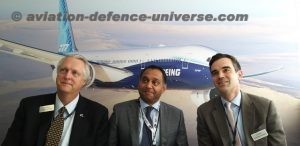Hamme, Belgium. 17 June 2019. Euramec, the European flight simulation manufacturer, announced Threat Error Management (TEM), its new Scenario-Based FTD for aeroclubs, flying schools and home-builts.
TEM is based on a Diamond DA 20 platform with customers having the choice of an analog or a full-glass cockpit display. The adjacent Instructor Station houses a database of emergency scenarios based on real-life incidents from around the world.
“Safe Pilots are always Learning”
It is an old adage but true!
Working with AOPA UK, Euramec has developed a set of emergency scenarios that are too dangerous to attempt safely in an actual aircraft.
Bert Buyle, CEO Euramec: “The idea is to create situations that are certainly not part of practical flight lessons, but can be defined as life-threatening situations. Our objective is to let student-pilots experience such emergency situations, but the training obviously is also for experienced private pilots to live these simulated situations. This makes a rainy day with flight cancellations a smart learning experience in your aeroclub.”
AOPA has an extensive library of reports on critical safety issues, including engine operations, collision avoidance, Wing contamination/icing, thunderstorms and ATC, Turbulence, Forced landings, Spatial disorientation, single-pilot IFR, fuel management and mother critical issues.
Euramec’s mission is to bring affordable flight training to the industry. The estimated operating cost of TEM for an aeroclub will be between 8-15EUR per hour.
Flight Safety at a Glance
Over the last several years NTSB statistics reflect that in a million trips, there are 700 times more fatalities on General Aviation planes than on airliners. Why is there such a disparity between the two modes of flying?
- Commercial captains re-train every 6 months while private pilots have only a biannual check – every 24 months.
- Airline pilots average about 900 hours per year. The FAA reports that GA pilots average 70 hours per year and pilots of homebuilt planes only 35 hours per year.
- Airlines have two pilots in the cockpit instead of one, which is common in GA flying
The result is that GA pilots are not as prepared to handle emergencies as are their commercial counterparts. The main purpose of the flight simulation training done by commercial pilots is that of practicing how to handle emergency procedures that they may never encounter in the air. It is impractical to try to emulate most equipment failures in the air, but it is extremely useful to be able to do so on the ground under controlled conditions. Most GA pilots do not have this luxury.
Euramec wants to make a difference with TEM and bring essential emergency flying skills to aeroclubs, flying schools and the homebuilt community.























































































































